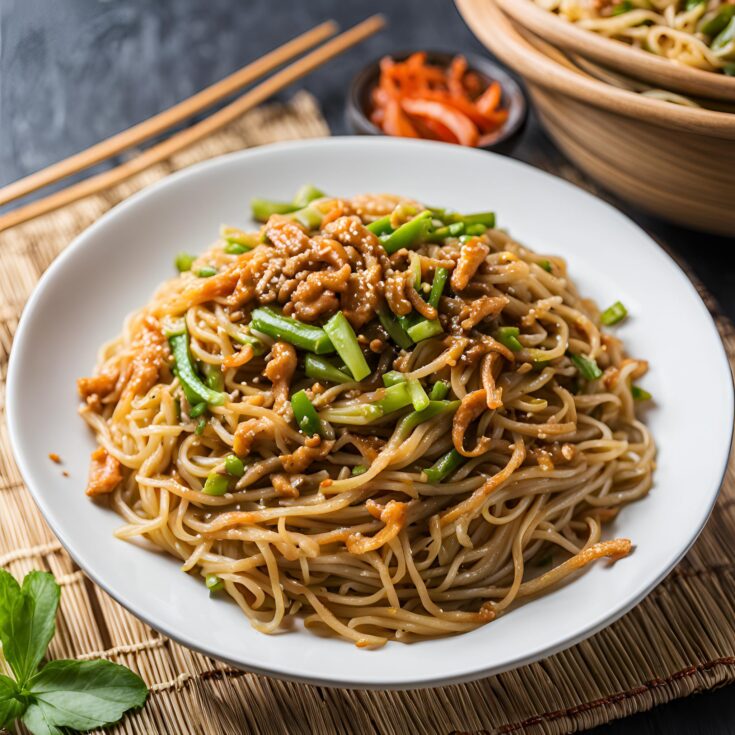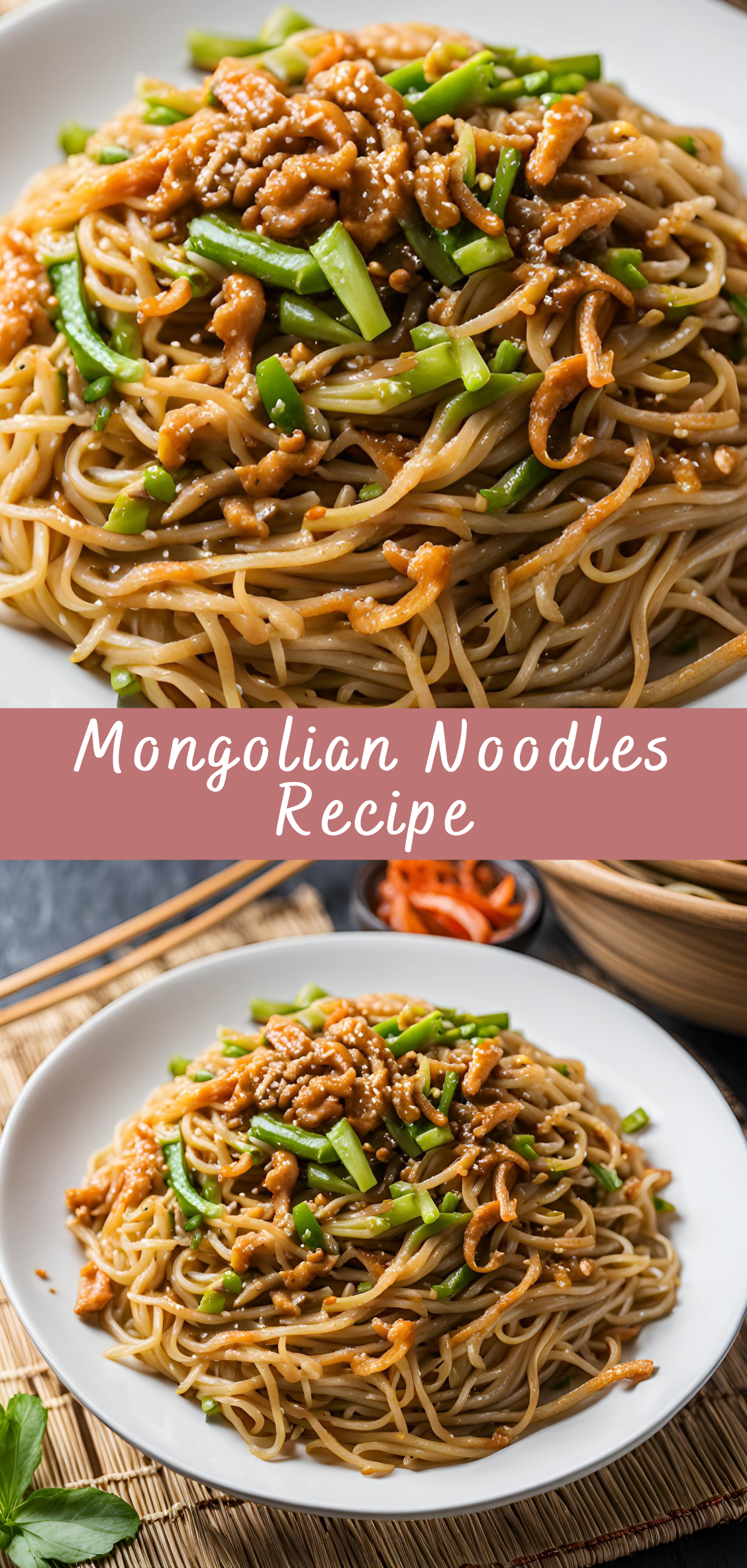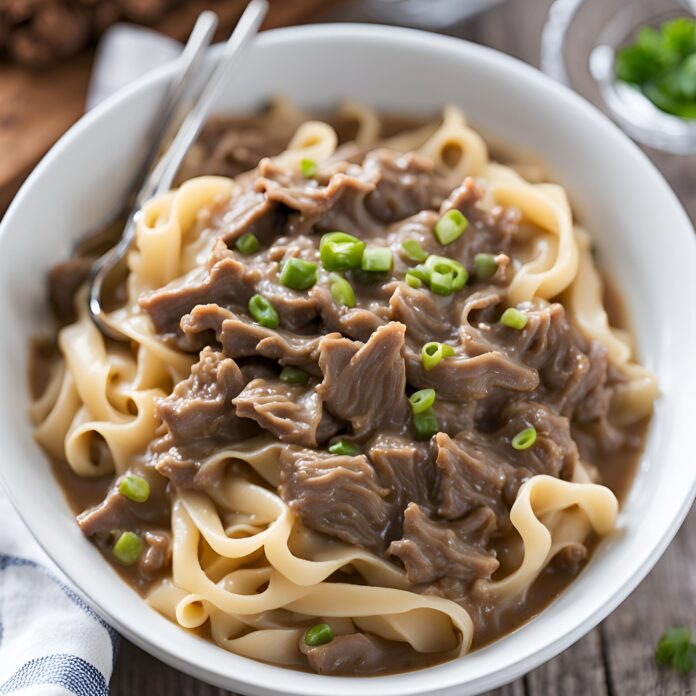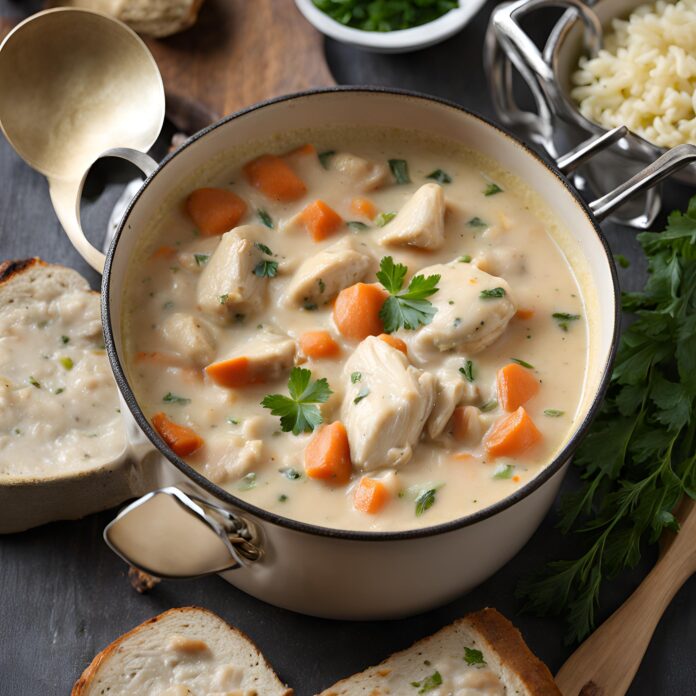Mongolian Noodles Recipe
Mongolian noodles are a flavorful, savory dish that combines stir-fried noodles with an aromatic sauce, vegetables, and often beef, chicken, or pork. The dish has been influenced by both Chinese and Mongolian cuisines and is known for its balance of salty, sweet, and spicy flavors. It is both hearty and satisfying, making it perfect for a weeknight dinner or for entertaining guests.

In this detailed guide, we will go through step-by-step instructions to make a classic Mongolian noodle dish. Additionally, we’ll explore different ways to customize this dish, tips for achieving the best flavors, and suggestions for pairing it with sides or beverages.
History and Background of Mongolian Noodles
Mongolian noodles, while seemingly named for the region of Mongolia, actually have roots deeply intertwined with Chinese cuisine, particularly that of northern China. The dish is often associated with the cuisine of the Inner Mongolian region, where wheat-based noodles are commonly consumed.
Though the flavors and cooking techniques have been heavily influenced by the Chinese, the dish has become popular in many countries, with numerous adaptations reflecting local preferences. Mongolian noodle dishes are generally stir-fried, featuring a balance of savory, sweet, and sometimes spicy flavors, which are achieved through a combination of soy sauce, hoisin sauce, and other seasonings.
Mongolian cuisine traditionally revolves around meats such as mutton, beef, and horse, but since Mongolian Noodles have been widely adapted, many variations with chicken, pork, and even tofu can be found.
Instructions for Preparing Mongolian Noodles
Step 1: Prepare the Noodles
-
Boil the noodles: Bring a large pot of water to a boil. Add a tablespoon of salt to the water. Once the water is boiling, add the fresh or dried egg noodles. Cook according to package instructions, usually about 3-5 minutes for fresh noodles, or a little longer for dried. Be sure not to overcook them as they will continue to cook in the stir-fry later.
-
Drain and rinse: Once the noodles are cooked, drain them in a colander. Rinse them under cold water to stop the cooking process and remove any excess starch. This helps prevent the noodles from sticking together.
-
Toss with oil: After draining, drizzle about a teaspoon of vegetable oil over the noodles and toss them to coat. This helps prevent them from sticking together and adds a bit of richness to the texture.
Step 2: Prepare the Stir-Fry Sauce
While the noodles are cooking, you can quickly prepare the stir-fry sauce.
-
In a small bowl, whisk together soy sauce, hoisin sauce, oyster sauce, rice vinegar, brown sugar, and sesame oil. Add a pinch of chili paste or sriracha if you like a spicy kick. Whisk until the sugar is dissolved, and all the ingredients are well-combined.
-
Add water to the sauce mixture to help thin it out a bit, making it easier to coat the noodles evenly.
Step 3: Cook the Protein (If Using)
-
Prepare the beef (or chicken, pork, or tofu): Slice the protein thinly against the grain for beef or pork, or into bite-sized pieces for chicken. If using tofu, press it to remove excess moisture, then cut it into cubes.
-
Stir-fry the protein: Heat 1 tablespoon of vegetable oil in a large skillet or wok over medium-high heat. Once the oil is hot, add the sliced beef (or your chosen protein) and stir-fry for about 4-5 minutes until it’s cooked through and slightly browned. Season with a little salt and pepper. Remove the cooked protein from the skillet and set it aside.
Step 4: Stir-Fry the Vegetables
-
In the same skillet or wok, add another tablespoon of oil if needed. Add the sliced onions, bell peppers, carrots, and any other vegetables you are using. Stir-fry the vegetables over medium-high heat for about 3-4 minutes until they are tender but still crisp. Add the minced garlic and mushrooms (if using), and stir-fry for an additional minute until fragrant.
-
Add the shredded cabbage (optional) and cook for another 2 minutes, just until the cabbage begins to wilt and soften.
Step 5: Combine Everything
-
Add the noodles: Once the vegetables are cooked, return the cooked noodles to the skillet with the vegetables. Toss everything together to combine. Add the pre-cooked beef or protein back to the skillet as well.
-
Add the stir-fry sauce: Pour the prepared stir-fry sauce over the noodles and vegetables. Toss everything well so the noodles and vegetables are evenly coated with the sauce.
-
Cook for another 2-3 minutes: Stir everything together and allow the sauce to thicken slightly, ensuring that everything is heated through.
Step 6: Serve and Garnish
-
Plate the noodles: Serve the Mongolian noodles on plates or in bowls. Sprinkle with freshly chopped green onions for a burst of color and freshness. If you like, you can also garnish with sesame seeds, a few chili flakes for heat, or fresh herbs like cilantro or parsley.
-
Serve immediately: Mongolian noodles are best enjoyed hot, straight from the skillet.
Tips for Making the Best Mongolian Noodles
-
Use fresh noodles: Fresh egg noodles provide the best texture for this dish. If you can find them at an Asian grocery store, they’ll give the dish a more authentic feel. If fresh noodles aren’t available, dried wheat noodles can be used as a substitute.
-
Customize your protein: While beef is commonly used in Mongolian noodles, you can swap in chicken, pork, or even tofu for a vegetarian version. For a healthier alternative, try using lean cuts of protein.
-
Get creative with veggies: The vegetables in Mongolian noodles can be swapped or added to based on your preferences. For example, snow peas, bok choy, or baby corn are great additions. Experiment with what you enjoy most!
-
Adjust the spice: If you enjoy a spicier dish, increase the amount of chili paste or add red pepper flakes to the stir-fry. On the other hand, if you prefer a milder version, you can skip the spicy components altogether.
-
Add a touch of sweetness: The brown sugar or honey in the sauce balances the savory soy sauce and oyster sauce. Adjust the amount to suit your taste, especially if you like a sweeter flavor profile.
Variations of Mongolian Noodles
Mongolian noodles can be easily adapted to suit different tastes and dietary preferences. Below are a few variations:
-
Vegetarian Mongolian Noodles: Skip the meat and focus on the vegetables for a hearty vegetarian dish. You can add extra tofu for protein and flavor. Use vegetable broth for the sauce if you want a completely plant-based version.
-
Spicy Mongolian Noodles: Add more chili paste, sriracha, or fresh chopped chilies to make the dish spicier. You can also use a spicy hoisin sauce or add chili oil to the stir-fry.
-
Mongolian Noodles with Shrimp: Swap out the beef for shrimp for a lighter seafood option. Shrimp cooks quickly and adds a different texture to the dish.
-
Beef and Broccoli Mongolian Noodles: For a more substantial version, add steamed or stir-fried broccoli to the dish for extra nutrients and crunch.
-
Mongolian Noodles with Peanut Sauce: Add a peanut butter-based sauce for a creamy, nutty twist. Combine peanut butter with soy sauce, sesame oil, rice vinegar, and a bit of sugar to create a rich, creamy sauce.
Conclusion
Mongolian noodles are a delicious and versatile dish that can be customized to suit a variety of tastes and dietary needs. With the perfect combination of savory, sweet, and spicy flavors, this dish is sure to satisfy. Whether you’re making it with beef, chicken, or tofu, and whether you prefer your noodles spicy or mild, this recipe is sure to become a staple in your culinary repertoire.
The dish is not only quick and easy to prepare but also offers a wide range of variations and possibilities for customization. By following the detailed instructions and tips provided in this guide, you’ll be able to create a delicious Mongolian noodle dish that will impress your family, friends, and guests alike.
Enjoy your Mongolian noodles with a side of steamed rice, crispy spring rolls, or a refreshing cucumber salad to complete your meal!
Mongolian Noodles Recipe

Mongolian noodles are a flavorful, savory dish that combines stir-fried noodles with an aromatic sauce, vegetables, and often beef, chicken, or pork. The dish has been influenced by both Chinese and Mongolian cuisines and is known for its balance of salty, sweet, and spicy flavors. It is both hearty and satisfying, making it perfect for a weeknight dinner or for entertaining guests.
Ingredients
- 8 oz noodles (any type of Asian noodles like egg noodles, ramen, or udon)
- 1 tablespoon vegetable oil (or sesame oil for added flavor)
- 1/2 lb beef (such as flank steak or sirloin), thinly sliced
- 1 medium onion, thinly sliced
- 2 cloves garlic, minced
- 1 bell pepper, sliced (optional)
- 1/2 cup soy sauce
- 2 tablespoons brown sugar
- 1 tablespoon hoisin sauce (optional)
- 1 tablespoon rice vinegar
- 1 teaspoon grated fresh ginger
- 1 tablespoon cornstarch (optional, for thickening)
- 2 green onions, sliced (for garnish)
- Sesame seeds (optional, for garnish)
Instructions
- Prepare noodles: Cook the noodles according to the package instructions, drain, and set aside. You can toss them with a small amount of oil to prevent sticking.
- Make the sauce: In a small bowl, mix together the soy sauce, brown sugar, hoisin sauce, rice vinegar, ginger, and cornstarch (if using). Stir well to combine.
- Cook the beef: Heat the vegetable oil (or sesame oil) in a large skillet or wok over medium-high heat. Add the thinly sliced beef and cook for 2-3 minutes, stirring frequently until it’s browned and cooked through. Remove the beef and set it aside.
- Stir-fry the vegetables: In the same skillet, add the sliced onion, bell pepper (if using), and garlic. Stir-fry for 2-3 minutes until the vegetables begin to soften.
- Combine: Add the cooked beef back into the skillet with the vegetables. Pour in the prepared sauce and bring to a simmer. Cook for another 2 minutes to let the sauce thicken (if using cornstarch) and coat the beef and vegetables.
- Add noodles: Add the cooked noodles into the skillet and toss everything together until the noodles are evenly coated in the sauce.
- Serve: Garnish with sliced green onions and sesame seeds. Serve hot!
Notes
- Noodle variations: You can use any type of noodles for this dish, such as udon, ramen, or even spaghetti in a pinch.
- Vegetable options: Feel free to add other vegetables like carrots, snow peas, or mushrooms to suit your taste.
- Protein options: This recipe can also be made with chicken, pork, or tofu for a different protein option.
- Sweetness level: Adjust the amount of brown sugar to your liking, depending on how sweet or savory you prefer the sauce.
- Thickening: If you like a thicker sauce, increase the cornstarch slightly or cook the sauce a little longer to reduce it.



